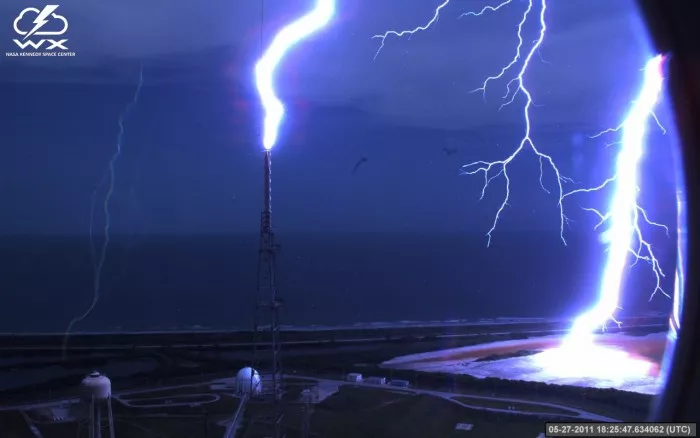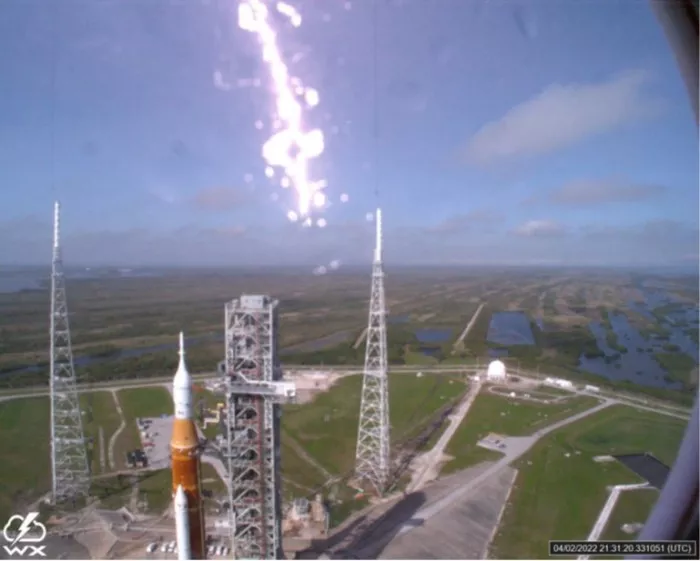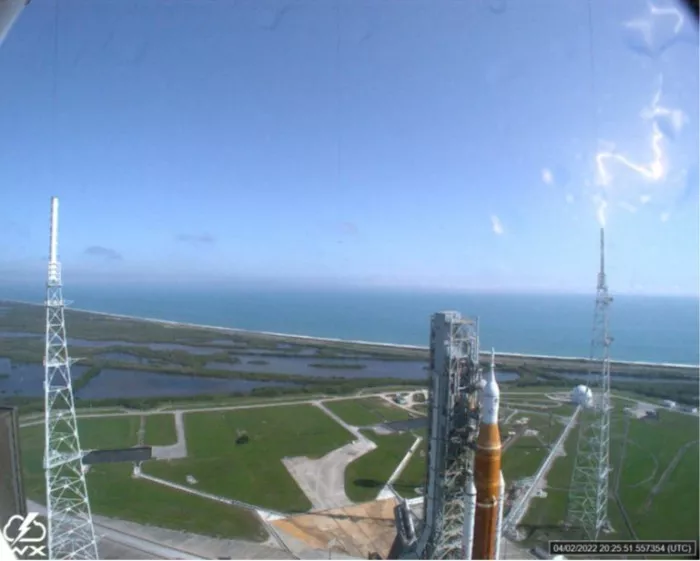*NASA's Florida facility was hit by a record lightning strike earlier this year *, which the agency outlined in a press release. NASA launched a rocket from the Kennedy Space Center, which is just off the coast of Florida. The base is a place with a long history. It not only witnessed the astronauts' launching to the moon, but also witnessed the resumption of manned space in the United States - the manned dragon flying ship of SpaceX successfully sent NASA astronauts to the international space station in 2020.

When the lightning strike occurred, NASA's space launch system (SLS) rocket manufactured by Boeing was also on the launch pad, and the Orion spacecraft was also installed on the top of the rocket, which was part of NASA's rehearsal for the first mission of its Artemis program; This is a multi-year effort to establish a permanent base on the moon.
This incident occurred in April this year. NASA shared lightning images taken by special cameras earlier this month. When it happened, SLS rocket (NASA affectionately called "giant moon rocket") and Orion spacecraft were at launch site 39B of Kennedy Space Center in Florida.
SLS is one of the largest rockets in the world, which can reach 322 feet when combined with Orion spacecraft. Orion is a spaceship also developed by Boeing. It will be responsible for transporting astronauts from the earth to NASA's lunar space station. From there, they will prepare for the second journey, landing on the moon by SpaceX.


These lightning strikes were caused by a storm in the area on April 2, which resulted in a total of four lightning strikes on the platform just next to the SLS. However, neither the rocket nor the spacecraft were harmed because NASA's lightning arresters were there to protect the spacecraft and anyone on the ground from such events. NASA explained in its press release that the lightning strike was only the second "frontal" strike on the facility since the installation of the new system.
The first lightning strike occurred in 2011, but this is the most powerful one in the history of the Kennedy Space Center. The positive lightning strike occurred when the power was transferred to the ground. The chief scientist of a partner of NASA who analyzed such events explained that the lightning strike in April 2022 had a current of up to 3000 amperes flowing to the ground. As a reference, power lines typically carry between 500 and 1100 amps.
Lightning stroke events of this scale will also produce their own electromagnetic fields, which may affect the electrical system. However, although both the Orion capsule and the core stage of the SLS were powered on by lightning, according to NASA, neither was damaged. SLS is composed of three levels. Its core stage is located in the center, with two other stages on both sides, which are used to generate the necessary thrust to lift it off the ground and into space.
The new lightning protection system is higher than the rocket it is intended to protect. It diverts lightning from the rocket through diagonal lines and insulated masts.